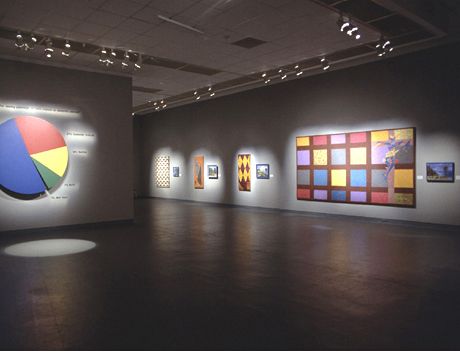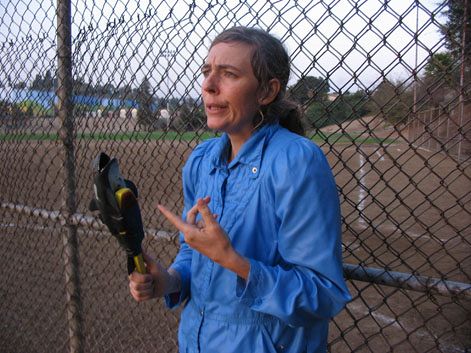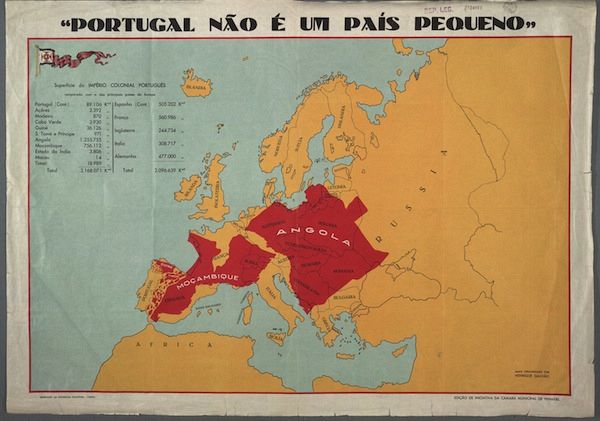Curator Rachel Reese developed this proposal during the Spring 2014 Curatorial Intensive in New York. The proposal later became the exhibition Pratfall Tramps at the Atlanta Contemporary Art Center, on view from February 6 – April 11, 2015.
"But in comedy—and only in comedy—failure is rewired into a version of success. Consider the fool. The fool is supposed to fail, that’s part of the fool’s function—his “project.” And because it is to some degree his project, the fool in fact cannot fail...Unique within the range of human activities, only the fool, by the very nature of his endeavor, can redeem failure.”
-David Robbins as interviewed by his landlord, Dennis Wilford, in 1991; passage excerpted from On Concrete Comedy: An Alternative History of Twentieth-Century Comedy, Pork Salad Press, 2011, pp 291-292 (1)
Four Japanese scientists won a ‘joke’ Nobel Prize this year, the Ig Nobel Prize in physics, with their serious (yes, serious) scientific study titled, “Frictional Coefficient Under Banana Skin.” Not just comedy, and not just science, the Ig Nobel Prizes, created and supported by the Annals of Improbable Research, are intended to award studies that make people laugh first, think second. Essentially proving that, yes indeed, bananas are slippery business, study subjects stepped on segments of 12 open and downward-facing (the epicarp, to be scientific) Cavendish banana peels on various linoleum surfaces to properly determine the frictional coefficient of the banana skin—and thus effectively quantifying an age-old comedic symbol. (2)
How do we begin to qualify and draw connections between artists and artworks dealing with or about ‘funniness’ as subject matter, however individualized? Can artworks, as physical objects and documents, themselves be funny or alternatively cringe-worthy, rather than just about humor? Pratfall Tramps—featuring Tammy Rae Carland, Jamie Isenstein, Sara Greenberger Rafferty and Mary Reid Kelley—investigates an artwork’s comedic desire. Each artist’s personal visual styles and narratives ‘tramp’ comedic avenues as a means to explore their sculptures, videos, and photographs through deviations from norms (whether cultural, social, logical, or linguistic): a candle cannot evade its own snuffing. (3)
While some of the artworks in Pratfall Tramps can function as comic objects, they primarily function as art objects, and therefore must be evaluated and interpreted through such a visual language, albeit distinctly individualized through personal jokes and visual codes (just as comedy is so individually authored, so too is art). As distinct languages, it is difficult for these (art) objects to traverse the singular histories of comedy and art? Comic sensibilities can be portrayed or disseminated through a variety of behaviors, languages and contexts, not necessarily through just speech and sound, as mainstream comedy would have us believe. And, as physical objects, the comic gesture expressed in these artworks must be thought to extend over a lengthy period of time, rather than via a quick performative impulse, as might a stand-up comedian. Does the humor sustain? Does it translate? If a celebrity-status stand-up comedian produces a book from his comic material, and it fails severely, is it because the timing, rhythm, and physical body of the comic are lost in such a translation? If an artwork, informed by said comic material, alternatively succeeds through transmutation, what is gained in the exchange of form?
Comedy is a language that operates to critique or bring to light relationships and systems of power, and perhaps this is where the pratfall is so crucial. The “pratfall” can be trickster at play, revealing the holes, tears, weaknesses, or fallacies in such systems. In this way, these four artists are benign violators; they’re instigators and tricksters specific to an individualized time and place, with subjective comedic styles all intelligent and playful (4). Thereby if we follow a comedy through doing rather than saying, the comic’s body is able to build a world, rather than just “fall down in some amusing way.” All are female artists, and some presented contexts and conceptual positions—references to comedy, film, and theatrical histories and traditions—are more explicitly gendered than others with literal and implied connections to the female body.
The history of women in comedy runs parallel to the history of women in various genres and fields in Western society—a history mostly overshadowed, and rather late to garner acceptance and momentum due to societal marginalization and conscious gendered stereotyping via accepted cultural mores (5). Groundbreaking female comics such as Phyllis Diller and Joan Rivers entered the scene in the 1950s and 60s through a lens of self-deprecation and domestic satire, paving the way for female comics and comediennes to enter the mainstream sphere of television and film, as we are seeing a “heyday” of sorts of female comics with a wide variety of styles and sensibilities in today’s media that has developed and pluralized over the past 60 years. (6)
In comedy, the performer can rewire failure as success. Pratfalls—bodily or object-based—are funny because they are a paradox: while suggesting lack of control, there is indeed complete and conscious control at play in these ‘planned’ failures. The pratfall reveals an innate human truth, and comedy is exactly about incorporating such folly, or potential for failure, into our actions. Thereby through comedy, such systems and categories as ‘success’ and ‘failure’ are muddied, confused, and possibly inverted.
Can we apply a “pratfall coefficient” to these artists in attempt to investigate the distance between the performing body and the resultant art object, or the distance created by an artworks’ content deviation from some established norm (a comedic violation)? For females in comedy, perhaps it is the awkward self-reflexivity of the self that Diller first perfected that has grown to mainstay status in women's comedy as we know it today. For the artists in the exhibition, perhaps it is the marked absence, yet direct referencing, to the physical female body through artworks.
Mark Twain famously quipped, “Humor is tragedy plus time,” which succinctly describes the important role that distance plays between a violating event or failure, and the facilitation of humor. Therefore coefficients—specifically as a measure of distance either real or perceived—are pivotal in comedy: the amount of distance, whether temporal, social, psychological, or spatial, facilitates effective success of comedic effect (and sometimes the fail itself is the success, right?) Human behavior, the all of us, is the true medium and coefficient of comedy: the relationship between people and material—whether that is a language, object(s), or a technology—creates and sustains the subjective comedic response.
Footnotes:
(1) David Robbins’ writings on the comic impulse, and in particular, his seminal text On Concrete Comedy: An Alternative History of Twentieth-Century Comedy, with its “off-center interpretative context” has helped shape my understanding of these artists’ materials and processes, and in framing this exhibition. Concrete comedy—Robbins’ invented term for an invented subject—is the comedy of “doing rather than saying,” with comic objects and gestures in the real world rather than the constructed and reinforced world of mainstream comedy (radio, TV, Internet, pop culture). Concrete comedy isn’t art with a “humorous dimension,” but rather, the telling of comedy that has taken material form.
(2) Since the beginning of the 20th century, slipping on a banana peel maintains itself a fixture in physical comedy, originally and widely disseminated on the Vaudeville stage. Such a pratfall, however comic, derives from a real societal fear in American history: the onset of mass Panamanian banana imports to New York City in the mid 19th century (bananas quickly became a street snack of choice) combined with urban overcrowding and lack of proper public sanitation led to an onslaught (yes) of discarded banana peels—and, OK, other garbage—in the streets. Whether or not these surplus and decomposing banana peels were an actual threat to safety is moot, as they became to symbolize poor manners first, punch line second.
(3) Thank you to Dr. Peter McGraw, Associate Professor of Marketing and Psychology at the University of Colorado, Boulder and Director of the Humor Research Lab at the University of Colorado, Boulder—a center dedicated to the “scientific study of humor, its antecedents, and its consequences”—for speaking with me about the Benign Violation Theory and the importance of using a theoretical framework to deconstruct the comic response. The Humor Research Lab uses McGraw and Caleb Warren’s Benign Violation Theory as its theoretical base, which is built upon research by linguist Tom Veatch and other existing humor theories, proposing that “humor occurs when and only when three conditions are satisfied: (1) a situation is a violation, (2) the situation is benign, and (3) both perceptions occur simultaneously.” You can learn more on humorresearchlab.org.
(4) According to cultural critic Lewis Hyde, while tricksters are usually thought of as boundary crossers, characters who find the limits and violate them, they can also be reimagined as "joint-workers,” seeking out the “joints” of this world—sometimes to disrupt, to keep them limber, or, sometimes they simply oil the joints with humor, keeping them flexible.
(5) As an aside, it must be noted that the research for this exhibition includes many male references—scholars, artists, theorists—and that Pratfall Tramps is an exhibition with all-female artists including specific gendered artistic positions. What might be conceived as misalignment or even misrepresentation here actually parallels with this exact position, considering the marginalized history women have held in said fields of research, society, and culture.
(6) Yael Kohen’s book We Killed: The Rise of Women in Comedy, attempts to build narrative on this underanalyzed field through “scores of first-person interviews, clips from contemporary reviews and excerpts from stories on a huge roster of female comics, their male contemporaries and the people that they inspired or knew them.” Though not exhaustive (and even includes some erroneous omissions), the 2012 book is written by a female journalist who was seeking proportional representation for this history and she gives proper credence to the arduous and, tiresome, battle fought by women to break into mainstream comedy. As recent as 2007, articles such as Christopher Hitchens’ Vanity Fair essay titled "Why Women Aren't Funny" continue to present female comics as lesser contemporaries—in both comedic sensibilities and abilities—to their male counterparts. Since 1975, NBC’s Saturday Night Live has been instrumental in introducing and providing a mainstream platform for groundbreaking female comics, such as Lorne Michael’s exceptional first hire Gilda Radner.
References:
Harris, Paul, “How funny women fought hard for their place in the spotlight,” The Guardian, October 20, 2012.
Hitchens, Christopher, “Why Women Aren’t Funny,” Vanity Fair, January 2007.
Hyde, Lewis, Trickster Makes This World: Mischief, Myth and Art, New York, North Point Press, 1998.
Mabuchi, Kiyoshi et al, “Frictional Coefficient under Banana Skin,” Tribology Online: The Japanese Society of Tribologists, vol. 7, no. 3 (2012), pp 147-151.
McGraw, A.P., Warren, C., Williams, L., & Leonard, B., (2012). Too close for comfort, or too far to care? Finding humor in distant tragedies and close mishaps. Psychological Science, 25, 1215–1223.
McGraw, A.P. & Warren, C. (2010). Benign violations: Making immoral behavior funny. Psychological Science, 21, 1141-1149.
Robbins, David, On Concrete Comedy: An Alternative History of Twentieth-Century Comedy, Pork Salad Press, 2011.
Research for Pratfall Tramps was supported by:
Independent Curators International
The Community Foundation for Greater Atlanta
Learn More
To learn more about this proposal, please email Rachel Reese at rreese@thecontemporary.org. To learn more about the Curatorial Intensive, email info@curatorsintl.org.






